by Pierce Stewart 1993 U300 36′ 9/18/13
Our Solar installation is finally done. This has been a long process, trying to make it a “factory” as possible as well as giving full roof access for walking without stepping on a panel or falling off.
So, we have four commercial Yingli 285 watt, 36-volt panels up top. They are 6.5 feet tall and quite wide too. Yingli is a top manufacturer of commercial panels with an 80,000-panel installation just completed by the company the guy I bought them from works from. They have installed a total of just over 500,000 in the U.S. I got the lowest wholesaler discount possible at $170 each. So, the total for the panels was $680 out the door. See the Yingli panels Panels are mounted about 2″ above the roof to allow air circulation underneath. The cooler the panels are, the more juice they make.
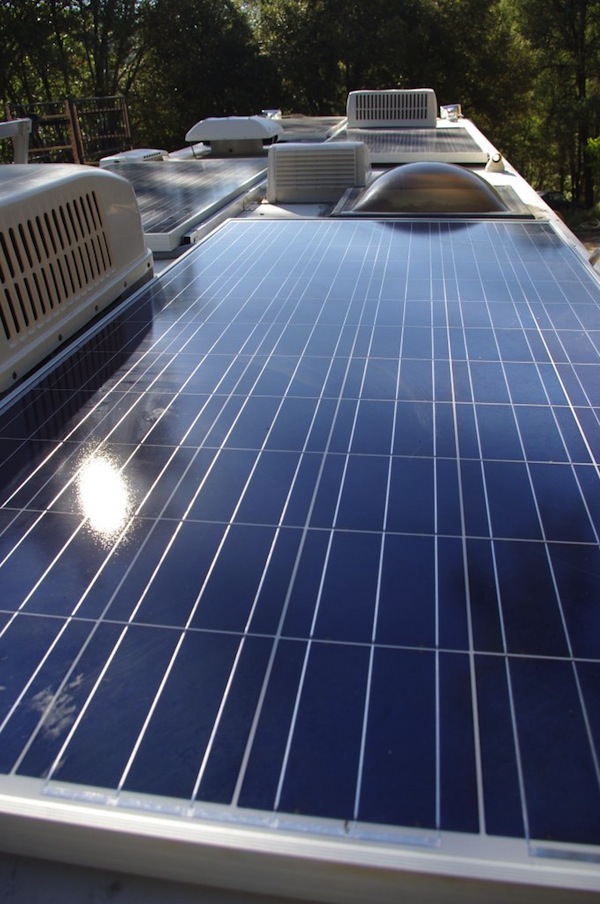
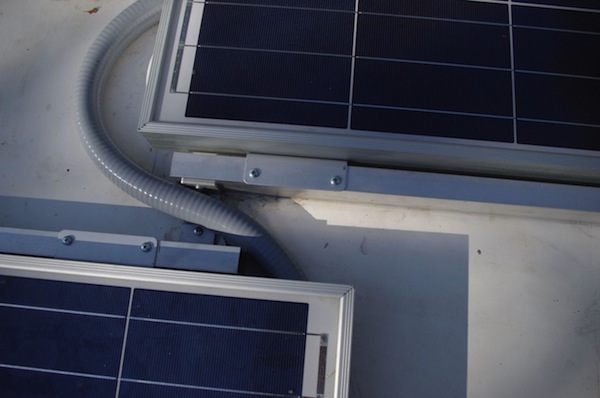
I did a series/parallel installation so I have about 72 VDC going down through the roof. I used commercial connectors and wires and were exposed, used a vinyl flexible conduit to protect the wires from the sun, stepping on them, etc. A stud finder on the metal setting was used to locate the aluminum frame just under the glass skin.
Larger panels must be higher voltage as the wires would have to be very large to do the job at 12V. With higher voltage, an MPPT controller is mandatory as the Classic 150 takes any voltage up to 150VDC and converts it to what our 12V Foretravels need.
The controller is a MidNite Classic 150 MPPT from Northern Arizona Wind and Sun @ $610 plus $12 shipping. It is the only controller that will handle the 1140 watts. I also used MidNite’s mini box for the 12V breakers for the PV panels and also between the controller and the batteries. It has a maximum of 150 volts input but on a cold morning, the panels if wired in series, could easily exceed the 150 volts. The controller is protected but will not switch on until the voltage drops to 150V. I used the top can compartment to mount the controller and all wiring. Hardie backer board was used to make the inside as fire-resistive as possible.
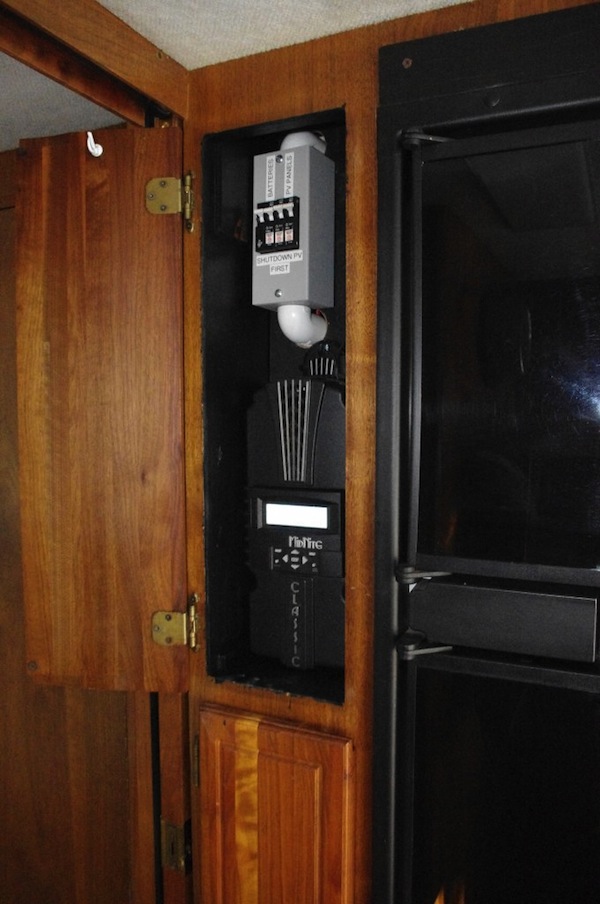
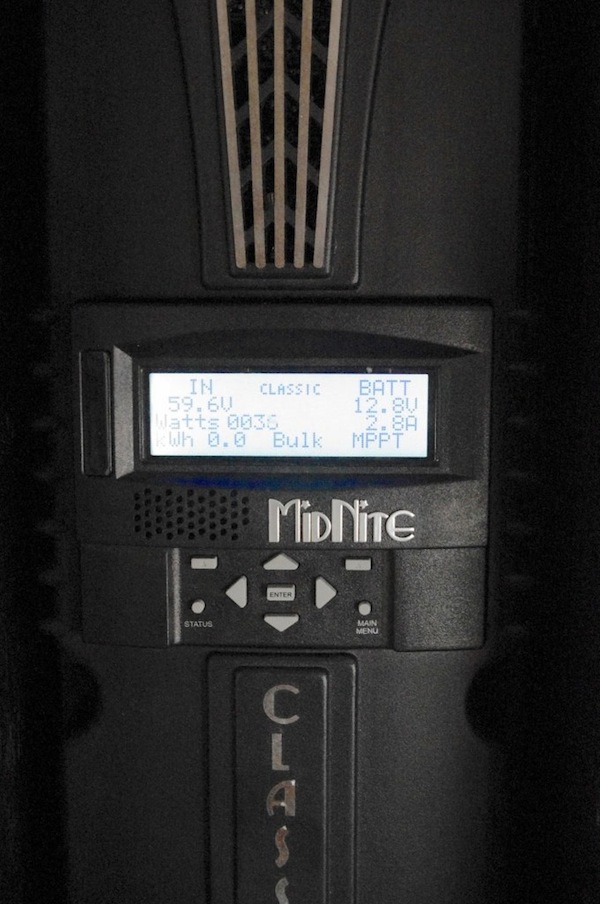
I brought up a pair of 4/0 cables from a junction box below the fridge where the HiFi amplifiers will go. From there, a couple of 2/0 cables lead to the electrical box below. A 250 amp fuse was installed where it connects to 12V. The compartment will also be lined with the Hardie board as the amps are installed.
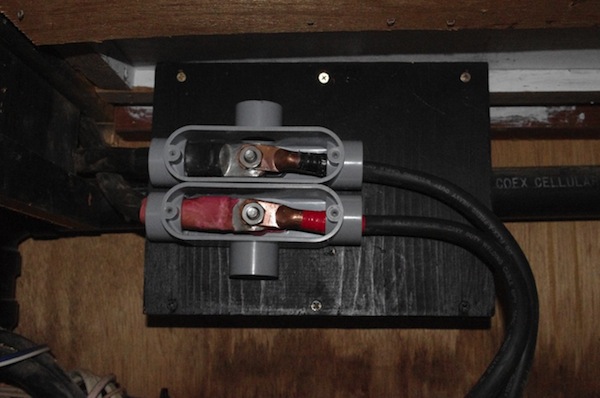
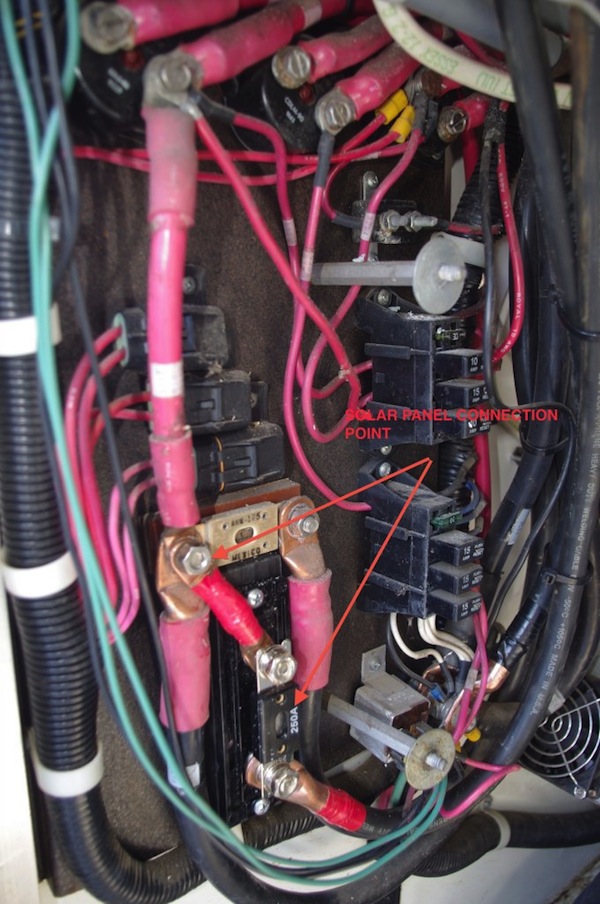
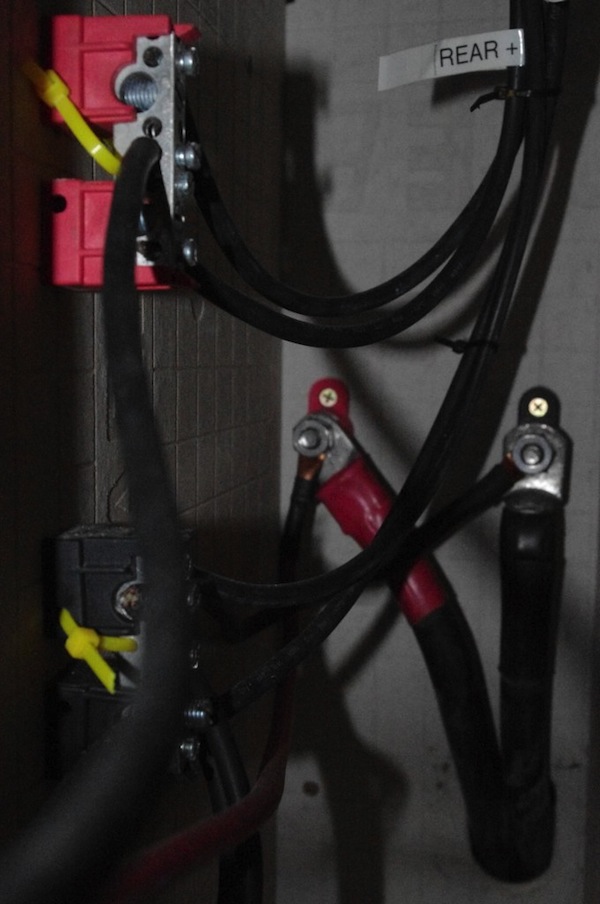
When we bought the coach, I found a real deal on 6 Genesis EX70X sealed batteries. They can just sit on a shelf for 2 years and still have 12.7 volts. They work well as house batteries. Actually, I bought extras and installed them on a couple of cars. As you can see from the site, they are VERY expensive but many solar companies go out of business as fast as they open and I got them for $35/each.
How does it work? Great! Before the sun even comes up, the cells are sending 72 volts to the controller. Once the amps go up a little (sun not up yet), the controller switches on and it start to charge. In the photo below, the controller has just switched on and is starting to charge the batteries. As it does this, the voltage drops a bit. With the sun up, the voltage runs from 70 to 80, depending on the outside temp and the watts also head up depending on how high the sun is and what level of discharge the batteries are in.
The controller is both very complex and very easy to set up when installed. The default setting is designed to not damage any make of battery with exact changes easily done from the menu. Just set the date and time plus lat/long and it knows when the sun rises and sets. All voltages are settable, even the LED reading can be made to reflect the exact voltage at the batteries from a good digital meter.
So, about $1600 out the door plus a lot of time gives you the potential of 1140 watts in ideal conditions.
The MidNite controller has ports for a Mac or PC display/control and can be assigned an IP number so you can see how it is working anywhere in the world with internet access.
RVs are eligible for second home tax advantages so any installation times 30% can be taken directly off income taxes you owe.
I wanted to be able to pull the panels off so I drilled into the aluminum roof frame material. I used an HF stud locator with the “metal” selected and then drilled and screwed them down. They are secure but I will use an expanding fastener as soon as they arrive. I also want to use an Allen button head stainless to make them more theft resistive and screw it down into the expanded fastener fitting.
I did discover a new tool for removing all the old and very useless roof coating put in every possible spot. Harbor Freight sells it as a: 6 Piece Pneumatic Scraper Kit. It was on sale for $16 so I gave it a try. I just vibrate and even if you push the blade against your hand, it does not do much. I put a little edge on the blade and gave it a try. Moderate pressure on the thick stuff takes it off quicker than anything else I have tried. I just vibrate a little and the nasty stuff peels off. Not as good for the thin edges but have had luck with a sharp scraper, 3M pad, and Comet. The big surprise was the amount of dirt underneath. Small cracks must have let water and dirt in as it was clear that the coating was only cosmetic.
I called MidNite today and described the full voltage (but no amps) before the sun came up. He said that with a full moon, the panels will generate enough voltage to show on the panel. No amperage naturally.
They have been working on a workaround to directly go to a laptop with an easy connection. Now, you have to go to your laptop prefs, select the local LAN and enter an IP of 192.168.1.13 and then navigate to the NET menu and enter 192.168.1.14 and then just plugin. The problem comes when a customer goes home or to a hotel with ethernet and it won’t connect. You have to change it back to the original setting which you have forgotten. MidNite then gets calls from customers. They want you to use a router instead-but if you don’t have one in the RV, you have to use the more difficult choice.
MidNite said there is no reason to shut down the system while driving, plugged into shore power or with the generator running. It will just see a higher voltage and probably go into the “float” mode.